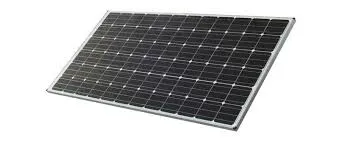calculate number of solar panels
Calculating the Number of Solar Panels Needed for Your Home
In recent years, the shift towards renewable energy sources has gained incredible momentum, primarily due to the growing concerns about climate change and the depletion of fossil fuels. Among various renewable energy technologies, solar power stands out as a popular choice for homeowners looking to reduce their carbon footprint and lower their electricity bills. However, one common question many people have when considering solar energy is “How many solar panels do I need for my home?” This article explores the factors involved in calculating the number of solar panels required and provides a step-by-step guide to help homeowners make an informed decision.
Understanding Your Energy Requirements
The first step in determining the number of solar panels needed for your home is understanding your energy consumption. This can be done by reviewing your electricity bills from the past year. Typically, utility companies provide a monthly usage report in kilowatt-hours (kWh). Take the total annual consumption and divide it by 12 to obtain the average monthly usage. Let’s say your monthly electricity usage is 900 kWh.
Assessing Solar Panel Output
Next, you need to understand the output of the solar panels you are considering. The energy output of solar panels depends on several factors, including the panel’s wattage, the amount of sunlight received in your area, and the efficiency of your solar system. Most residential solar panels range from 250 to 400 watts in output capacity. For this calculation, we can assume you are considering panels with a capacity of 300 watts.
To estimate the daily energy production of a single panel, you can use the formula
\[ \text{Daily Output (kWh)} = \text{Panel Wattage} \times \text{Hours of Sunlight Per Day} / 1000 \]
If you live in an area that receives an average of 5 hours of sunlight per day, a 300-watt panel would produce
\[ \text{Daily Output} = 300 \times 5 / 1000 = 1.5 \text{ kWh} \]
Calculating Total Daily Energy Needs
Now, you’ll want to calculate how much energy your household consumes daily. Given that your monthly usage is 900 kWh, your daily consumption would be
\[ \text{Daily Consumption} = 900 / 30 = 30 \text{ kWh} \]
calculate number of solar panels

Determining the Number of Solar Panels
To find out how many solar panels you need, simply divide your daily consumption by the daily output of one panel
\[ \text{Number of Panels} = \text{Daily Consumption} / \text{Daily Output} \]
Using our figures
\[ \text{Number of Panels} = 30 / 1.5 = 20 \]
This means you would need approximately 20 solar panels rated at 300 watts each to meet your energy consumption.
Consider Additional Factors
While this calculation gives you a fundamental estimate, there are several additional factors you should consider
1. System Losses Not all energy produced by solar panels is usable due to system inefficiencies, such as wiring losses, inverter efficiency, and shading. It’s generally recommended to factor in a 20% loss, which means you should adjust the number of panels upward. 2. Future Energy Needs Consider the possibility of increased energy usage in the future. If you plan to add electrical appliances or an electric vehicle, it might be wise to install more panels than strictly necessary at the outset.
3. Roof Space and Orientation The amount of suitable roof space and its orientation can significantly affect how many solar panels you can install. Ideally, a south-facing roof maximizes sunlight exposure.
4. Local Regulations and Incentives Be sure to check local building codes and any incentives available for solar installation. Your region might offer tax credits or rebates that could influence the size of the system you decide to install.
Conclusion
Calculating the number of solar panels needed for your home involves understanding your energy consumption, considering the output of the panels, and taking into account other environmental and logistical factors. By following these steps, homeowners can make an informed decision about their solar energy investments and contribute to a more sustainable future. With solar energy becoming increasingly accessible, there has never been a better time to harness the power of the sun.
-
Navigating Off Grid Solar Inverter: From Use Cases to Trusted PartnersNewsAug.05,2025
-
Solar Edge String Inverter: A Wholesaler’s Guide to Inverter Technology SelectionNewsAug.05,2025
-
Microinverters: Revolutionizing Solar Energy UseNewsAug.05,2025
-
Future of Monocrystalline Solar Panel Efficiency: Latest Technological AdvancesNewsAug.05,2025
-
Solar Panels for House: A Complete Guide to Residential Solar EnergyNewsAug.05,2025
-
Panel Bifacial Performance in Snow and Low-Light ConditionsNewsAug.05,2025







